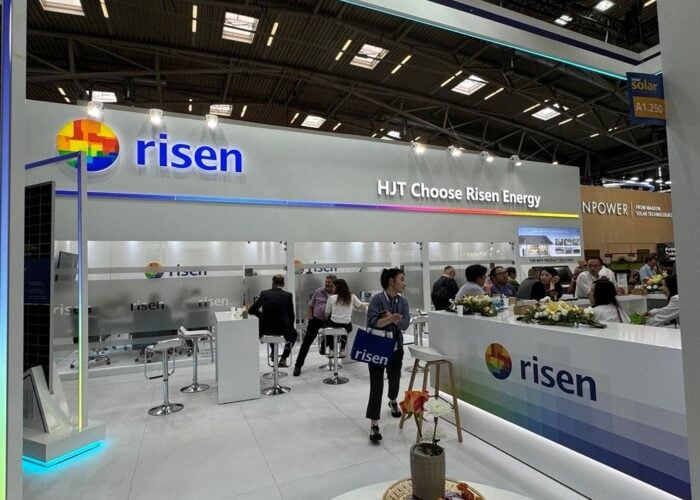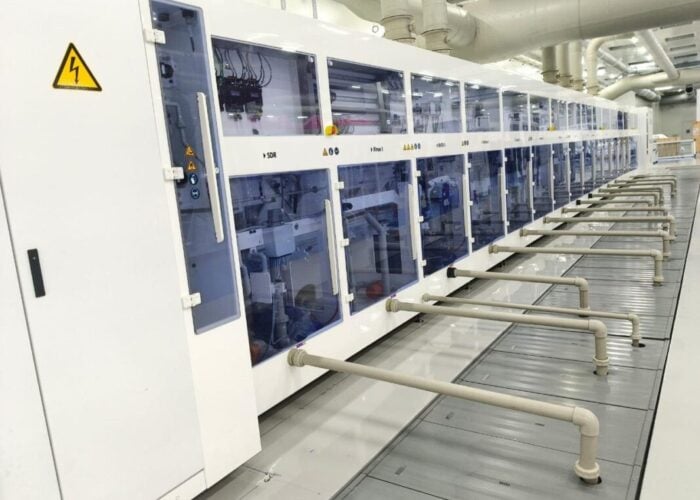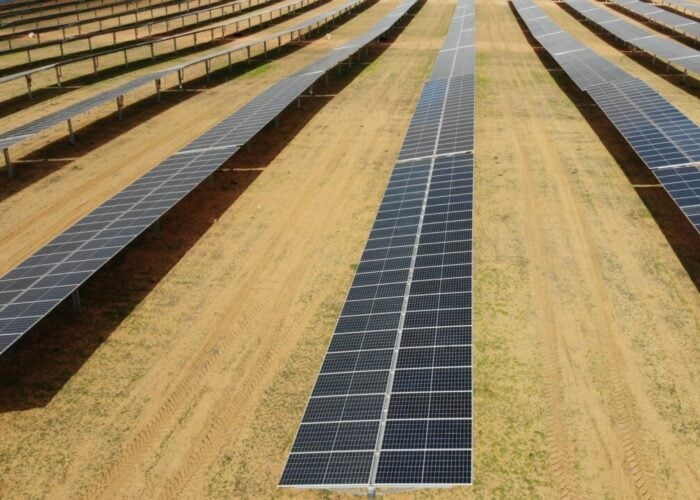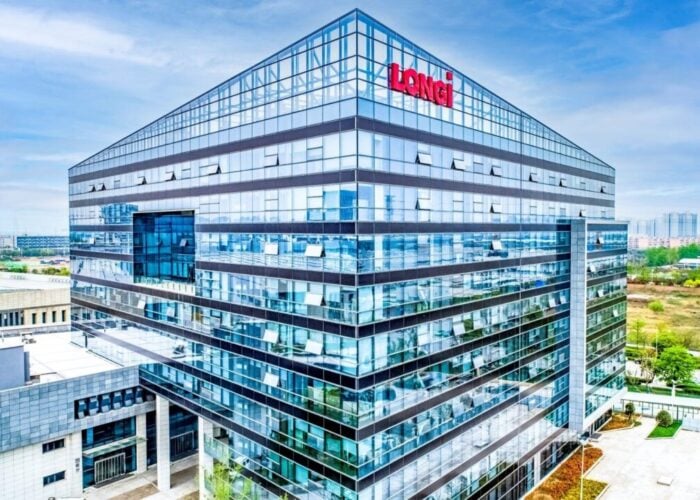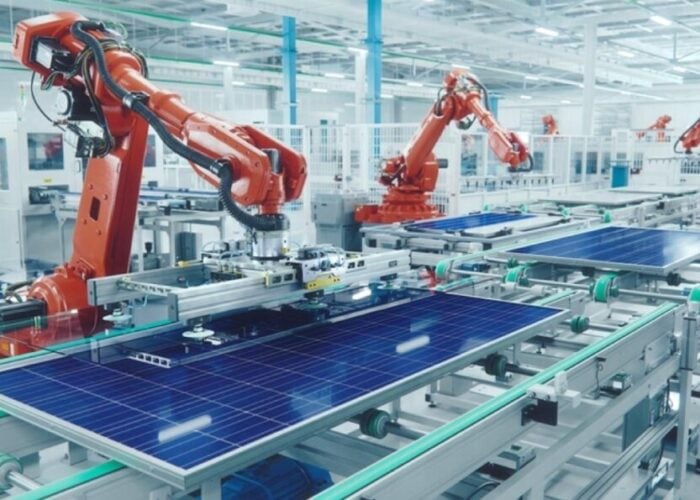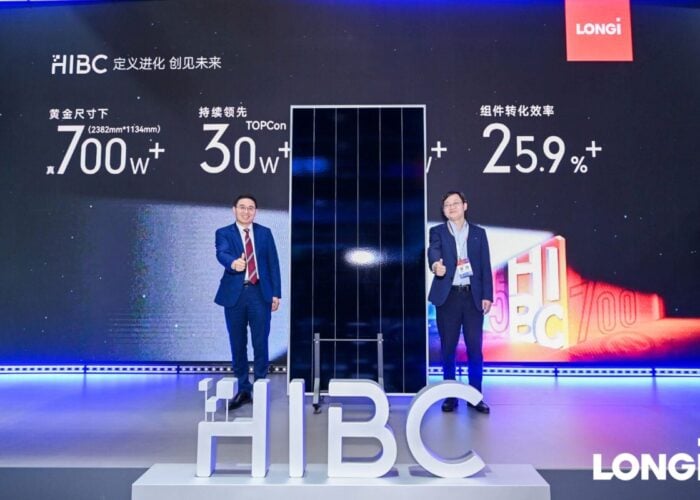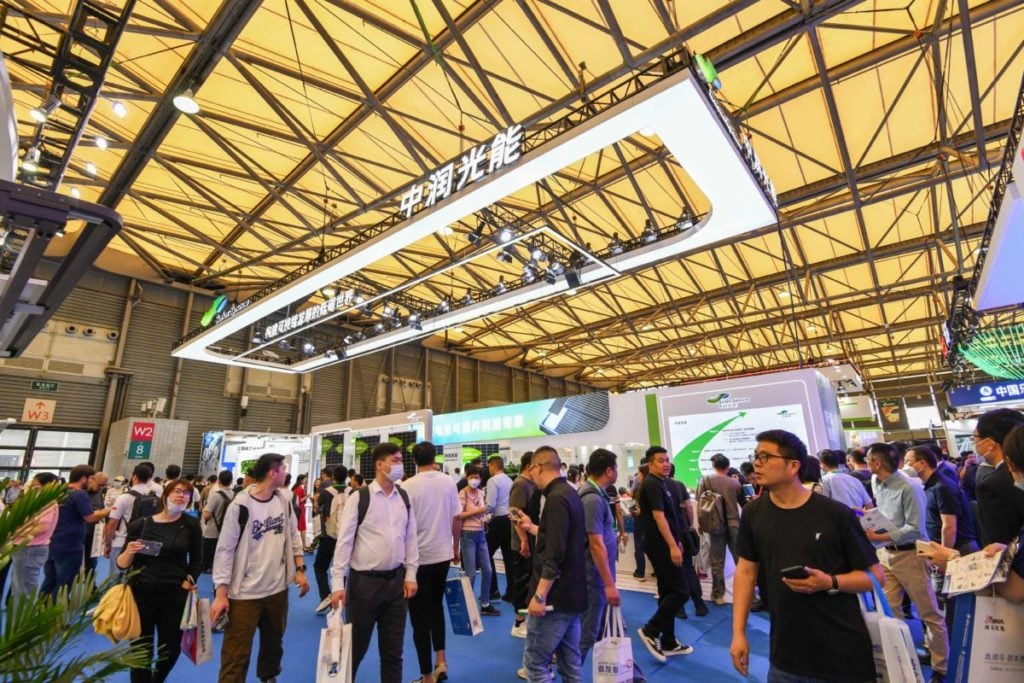
The SNEC exhibition, a grand event of the PV industry, came to an end on May 26.
After a two-year hiatus, this long-awaited reunion brought exhibitors and visitors numbers to a record high, where PV companies showcased new products, launched new technologies and showcased new ideas at the show. PV Tech‘s English and Chinese teams participated and reported the full event.
Unlock unlimited access for 12 whole months of distinctive global analysis
Photovoltaics International is now included.
- Regular insight and analysis of the industry’s biggest developments
- In-depth interviews with the industry’s leading figures
- Unlimited digital access to the PV Tech Power journal catalogue
- Unlimited digital access to the Photovoltaics International journal catalogue
- Access to more than 1,000 technical papers
- Discounts on Solar Media’s portfolio of events, in-person and virtual
Tunnel oxide passivated contact (TOPCon) is undoubtedly one of the terms most mentioned by solar PV module players at SNEC this year. While 2022 is seen as Year One of n-type technology, TOPCon has – as evidenced by SNEC 2023 – become the subsequent option for most PV module companies by virtue of its technical compatibility and lower cost.
At the exhibition, both mainstream module manufacturers and new players exhibited their TOPCon products. Among the first grouping are LONGi, JinkoSolar, JA Solar, Trina Solar, Canadian Solar, Risen Energy, Astronergy, TW Solar, Yingli Solar, DAS Solar, Jolywood Solar, DMEGC, Seraphim and Solargiga, followed by newcomers like Qnsolar, HY Solar, Solar N Plus and DAH Solar. See the chart below, for a better overview of the modules showcased during the event.
Integrating half-cut and multi-busbar technologies, the varied TOPCon modules on display all featured high n-type cell efficiency. The module output varies from 600-700W+ and the conversion efficiency stands around 22.5%-23%, depending on wafer sizes and encapsulation types.
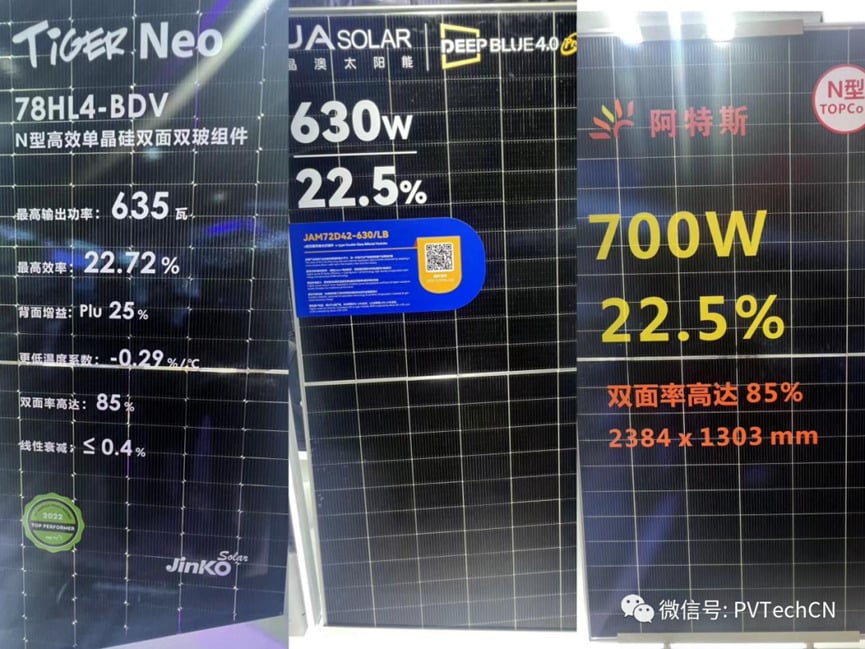
According to InfoLink, by the end of 2022, TOPCon capacity produced had exceeded 80GW and about 16GW of modules had been delivered. By the end of 2023, the nominal capacity of TOPCon will have exceeded 400GW.
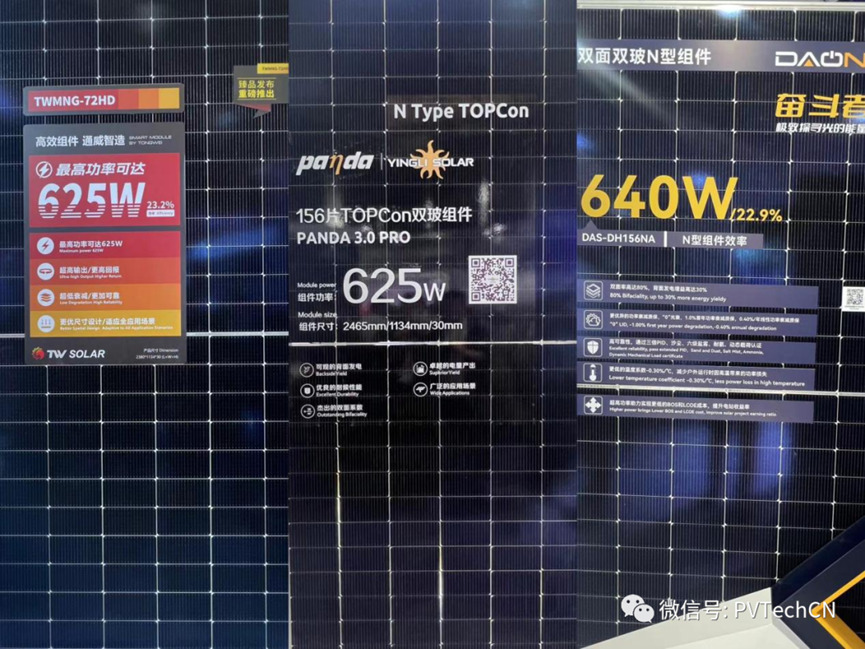
On Day 1 of SNEC, one TOPCon leader, JinkoSolar, announced that it planned to develop a vertically-integrated project with an annual capacity of 56GW in the Comprehensive Reform Zone of Shanxi province. The company will more than treble its initial investment with RMB56 billion (US$7.9 billion).
The project is expected to be constructed in four phases and reach full capacity in 2025. The first phase is planned to produce 14GW of ingots, wafers, cells and modules, respectively.
It will stand out to be the world’s first “super-integrated” solar plant incorporating wafer, cell and module production, and it will also be the largest n-type integrated production base. This solar plant promises to accelerate n-type growth and mitigate n-type product short-supply.
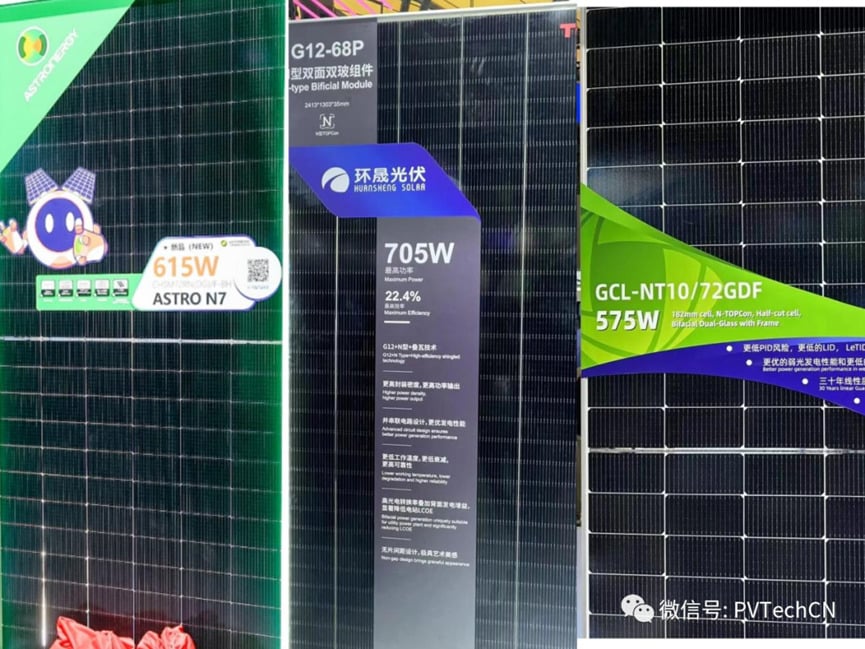
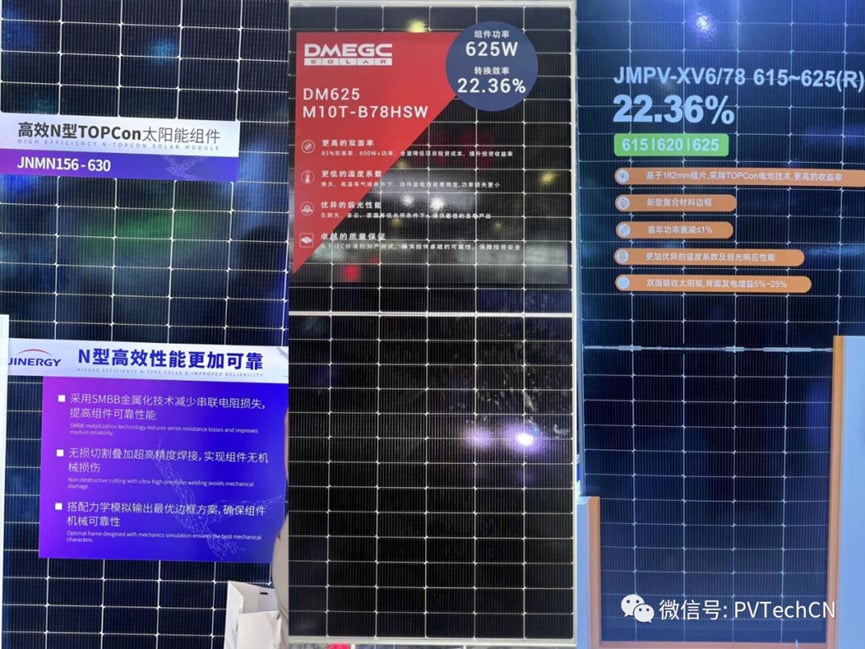
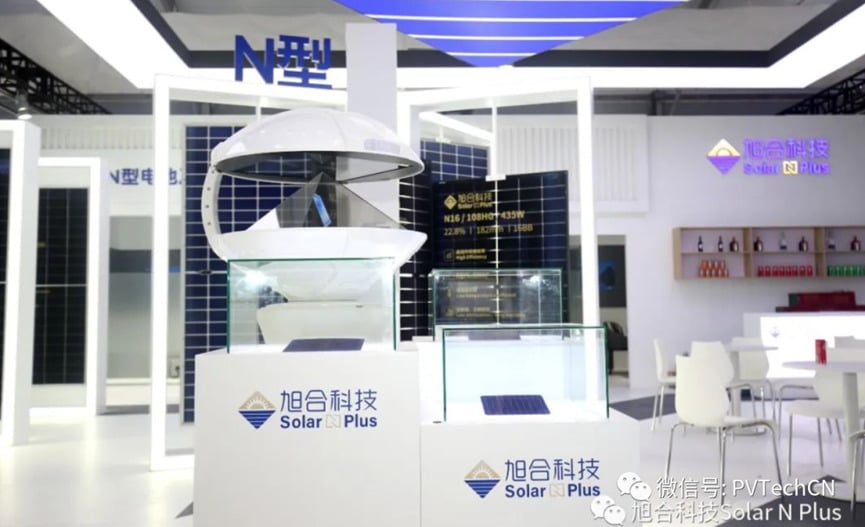
HJT topping 720W, IBC and perovskite building momentum
While TOPCon is expanding at full speed, heterojunction (HJT) and interdigitated back contact (IBC) are also continuing to grow in terms of both capacity and output. It can be said that the competition between TOPCon and HJT is still ongoing amid n-type technology.
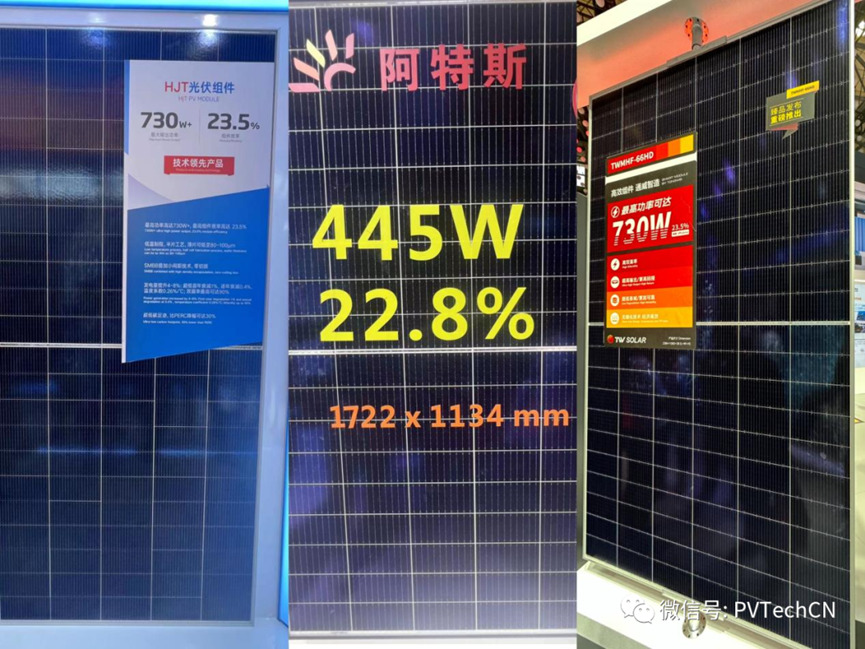
At SNEC, representatives of those promoting both TOPCon and HJT, among them Trina Solar, Canadian Solar and TW Solar, and companies that have already achieved HJT mass production, such as Risen Energy, Huasun Energy and Akcome, have all launched their HJT products.
Many manufacturers have unveiled modules with a power output passing the 700W threshold. Risen Energy’s HJT Hyper-ion series reaches just over 741W. Trina’s HJT module combining SMBB and small spacing technology achieves 730W. Akcome’s AK iPower 7.0 HJT module is designed with no busbars and attains 730W. Huasun Energy’s HJT module tops 720W, to name just a few.
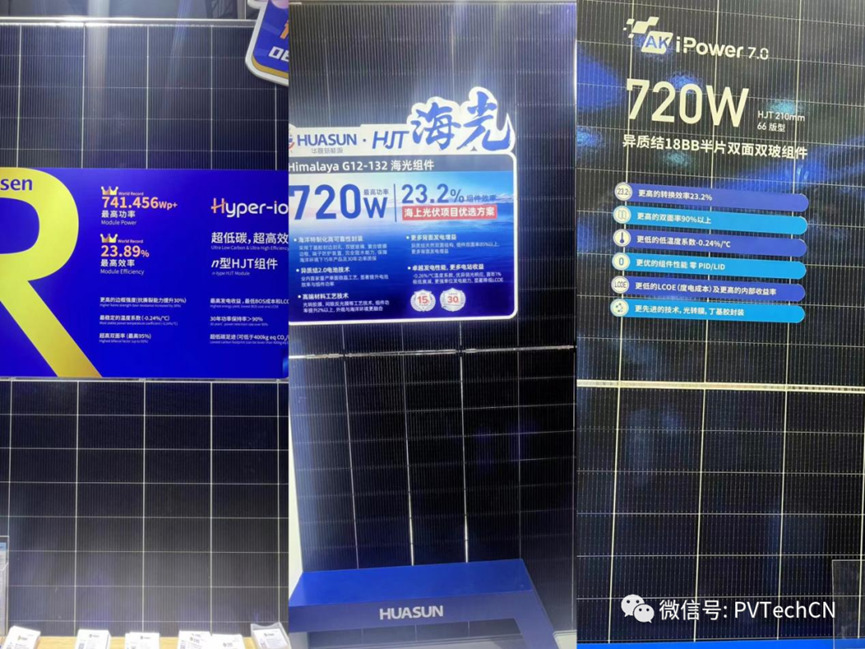
In addition, LONGi launched its 580W Hi-MO 7, an n-type based HPDC (High Performance and Hybrid Passivated Dual-Junction Cell) product. It is reported that HPDC is another innovation of HPC cell technology. It is interesting to note that the large bi-facial Hi-MO 7 released by LONGi still adopts the standardised M10 module size (2278×1134mm).
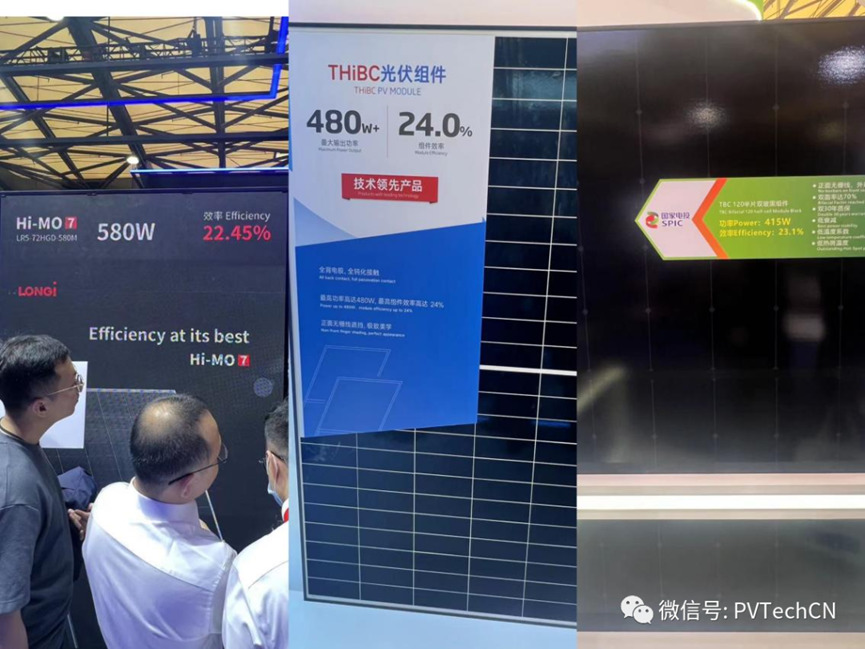
Trina Solar’s IBC module has been another highlight at SNEC 2023. It is designed with full back electrodes and full passivated contacts with no busbars shading the front.
Its highest output reaches 480W+, while its highest efficiency reaches 24%. Huanghe Hydropower, a subsidiary of State Power Investment Corporation, exhibited its eye-catching n-type IBC-based TBC technology. The output of its 60 version product is 415W and the module efficiency reaches 23.1%.
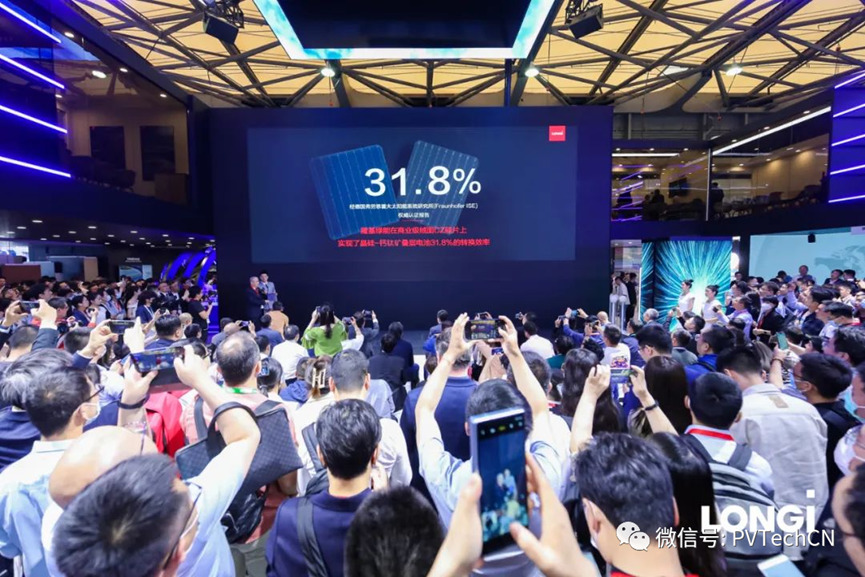
At a press conference held at SNEC, LONGi announced that it had achieved a conversion efficiency of 31.8% for Si-Perovskite tandem cells on textured commercial-grade Czochralski (CZ) wafers, as certified by the authoritative report from German’s Fraunhofer ISE. This conversion efficiency is also the highest certified efficiency internationally of perovskite tandem cells for commercial-grade CZ wafers.
BIPV, the eye-catching and personalised flexible modules
As observed by PV Tech, in addition to conventional PV modules, some companies also rolled out their cutting-edge and personalised modules. Among the attention-grabbing BIPV products are the curved-screen module by DAH Solar, the curved-screen flexible module by Haohua Optoelectronic, the ultra-thin, light and flexible mono efficiency module by Sunport Power, and the light, flexible module by SPIC.
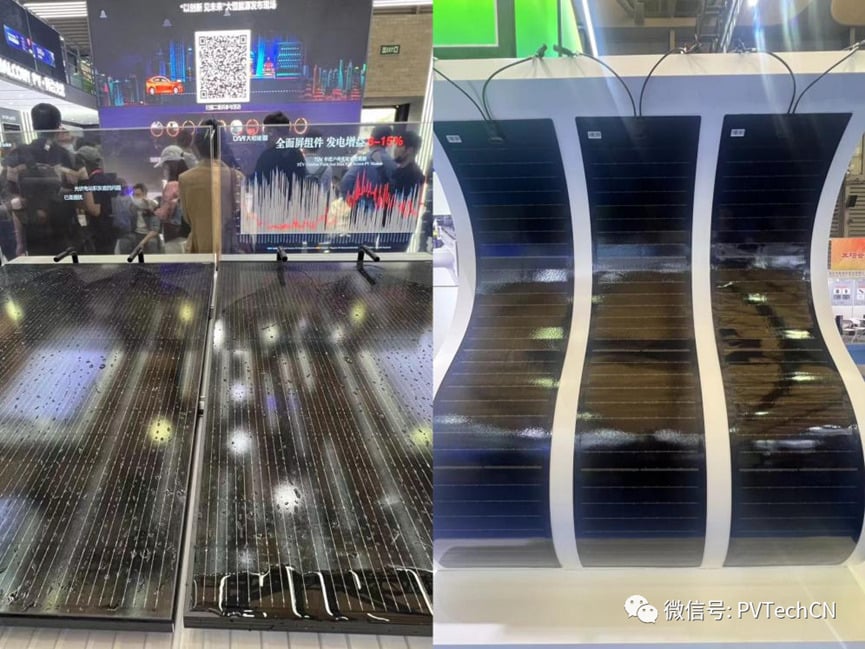
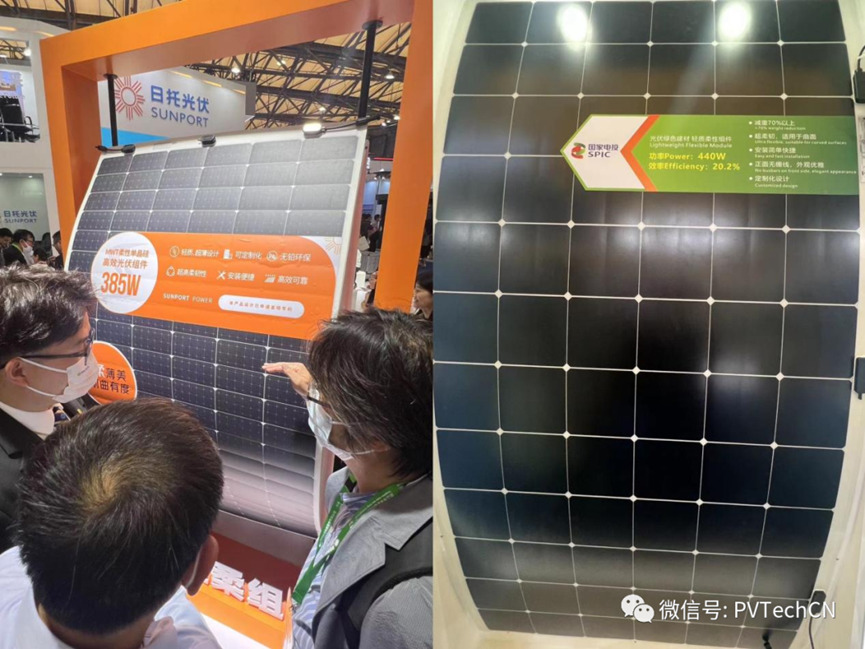
Driven by the goal of “carbon peaking and carbon neutrality”, China’s government agencies have issued a series of policies centring on Building Integrated Photovoltaic (BIPV) to encourage the industry’s development. The varied BIPV products on display speak well of such optimism.
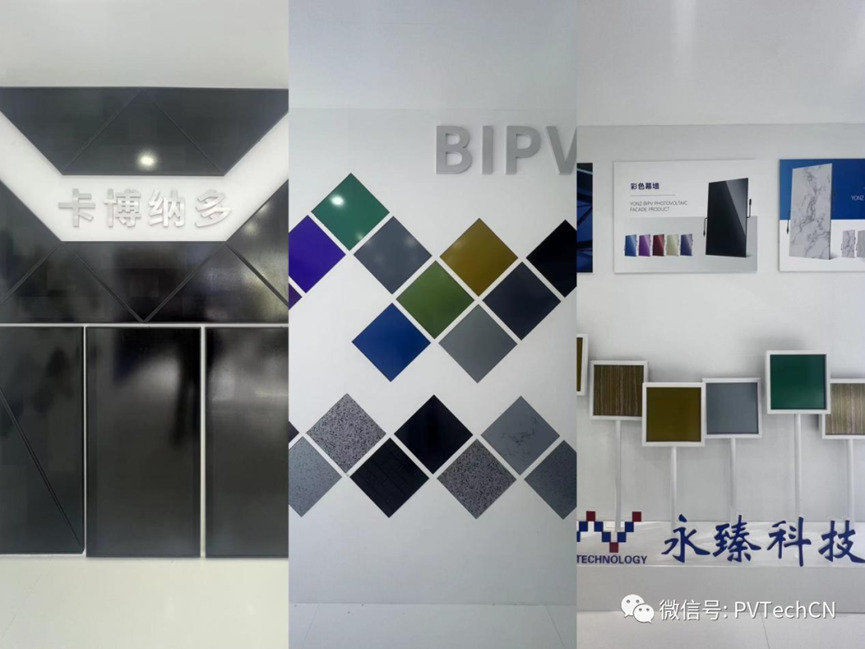
JinkoSolar came up with its BIPV rooftop products and PV curtain walls, Yonz Technology showcased its BIPV curtain walls and colour curtain walls, SPIC exhibited its green building PV shingles and Risen Energy presented three new versions of its latest BIPV products.
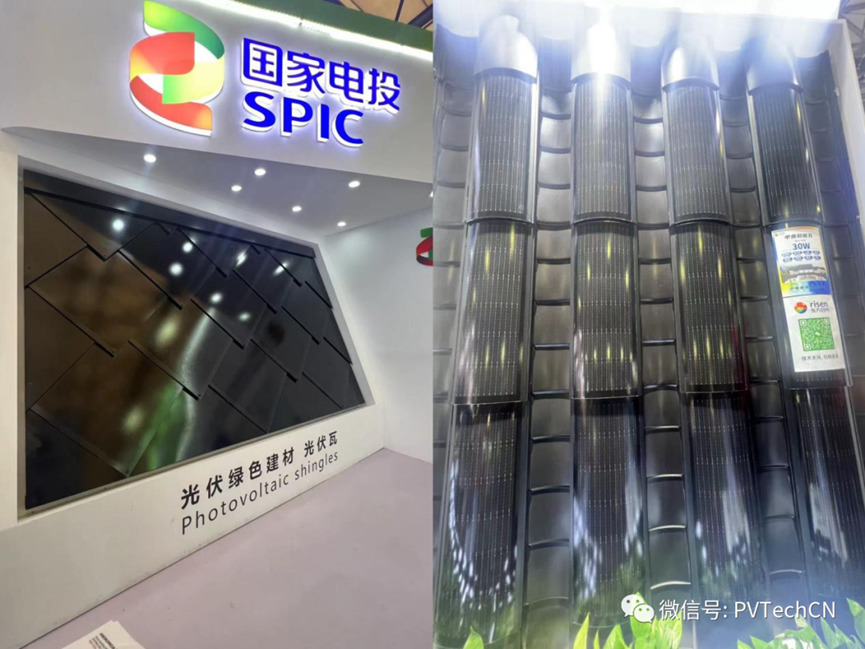
PV Tech talked to a number of PV leading companies during SNEC to explore the industrial development trends, corporate strategy and product technology. The PV Tech team also obtained public opinions from several companies. Stay tuned for more upcoming interviews.
Previous coverage of this year’s edition of SNEC can be accessed here.

